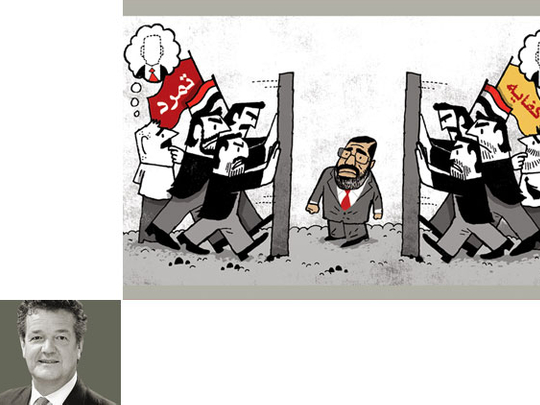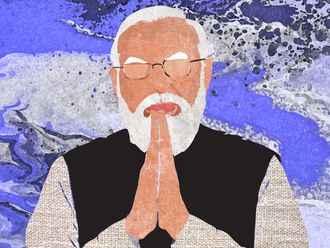
T he ongoing military intervention in Egyptian politics was triggered by the vast crowds of people who poured onto the streets to protest bitterly the conduct of the Muslim Brotherhood government. President Mohammad Mursi and his Brotherhood-backed Freedom and Justice Party have failed to win widespread popular legitimacy despite using Islam to justify their political actions to their overwhelmingly Muslim electorate.
The protesters are an inchoate mix of angry people, who know that something is wrong, but they do not have a single ideology or politics to unite them beyond their anger at the present state of their country. They are a mix of liberals, disappointed Mursi supporters and some who hanker after the old certainties of the Mubarak dictatorship.
A major trigger for this week’s vast outpouring of anger was the campaign group Tamarod, which was founded in late April by members of the Egyptian Movement for Change — better known by its slogan “Kefaya” (Enough) — which scored great success when it pushed for political reform in Egypt under former president Hosni Mubarak in 2004 and 2005.
Tamarod cannot be called a political party. It neither has a manifesto, ideology nor a leader. However, it does have a powerful spirit and an impressively effective organisation proved by the way it gathered 22 million signatures on a petition, apparently with ID numbers checked against the electoral register.
The petition that Tamarod launched is at the heart of this week’s anti-Mursi protests. It focused on setting right the wrongs of the Mursi administration, with demands like restoring security, standing up for the poor and disadvantaged, seeking justice for people killed by the security forces and complaining that no dignity is left for Egyptians or their country and bitterly criticising the collapse of the economy and rampant inflation.
Power of party politics
The challenge that the protesters face is to turn this anger into a political movement. Any successful party needs both an ideology, which provides the heart of the movement, and an ability to appeal emotionally to the people — often based on shared history and popular resonances. It also needs both a leader who is able to articulate the party’s response to events and an effective organisation.
The power of party politics is that people can relate more quickly to the politicians. For example, any American presidential candidate who goes on TV wearing a blue tie with a donkey on the jacket will be claiming the heritage of the Democrats and is laying claim to speak for the common man and to be the heir to presidents John F. Kennedy and Bill Clinton. Any British politician who puts on a yellow rosette is declaring himself to be a Liberal Democrat and to speak for libertarian individualism, reaching back to the Victorian glories of Gladstone and more recently of Jo Grimond.
The challenge in the Arab world is that no such party or political loyalty exists for the huge majority of citizens in many countries who seek a secular but not irreligious constitution. Any liberal Arab politician has to build a new popular political heritage and this is a major reason why the non-Islamist parties are having such a hard time. They do not have the advantage of Arab reformers of the 1950s and 1960s, who could borrow the legitimacy of successful revolutions based on anti-colonial nationalism — like Jamal Abdul Nasser’s Arab Socialists and Michel Aflaq’s original Baath Party in Iraq and Syria. Their popularity and legitimacy were founded on finding freedom for the Arabs from foreign rule. But the political turmoil and revolutions in Egypt, Syria and Iraq eventually led to military governments in all three countries and the subsequent slow decay of political legitimacy as the initial anti-colonial successes gave way to more predatory governments designed to stay in power.
Their place in the popular imagination was seized by the Islamist groups who saw the opportunities in the dysfunctional states and built hospitals and schools to capture the gratitude of millions of people. Mursi and his Muslim Brotherhood colleagues are building on the decades of social activism the Brotherhood has been so good at, but he has found that running a country is very different from attacking a dictator. The next few days will show if he sees a way to change course and become more inclusive.
However, for now, the whole of the Arab world is fascinated by the Tamarod and Kefaya activists, as they stake out the start of a secular and liberal political ideology for the Arab world. This week, they invited former International Atomic Energy Agency chief Mohammad Al Baradei to lead them in negotiations with the government. This may or may not work, but what is sure is that the slow progression from the Kefaya outburst under Mubarak in 2006 to Tahrir Square in 2011 and back to Tahrir Square in 2013 has shown a more articulate and able political touch, which has also built its own history and allowed individuals to share the essential political emotion of taking part in building the legend of their own country.











